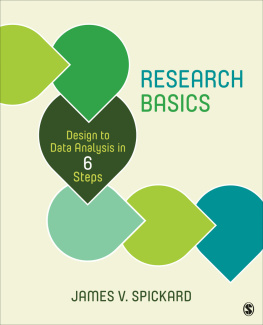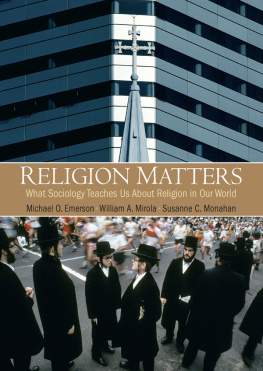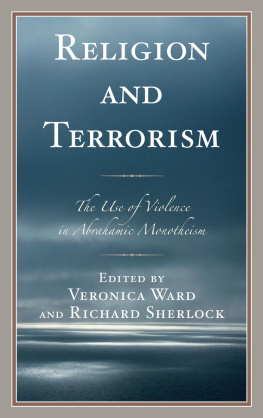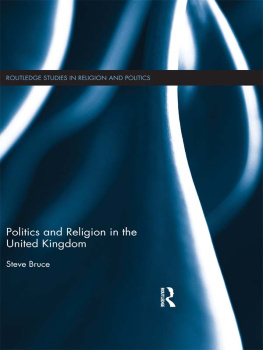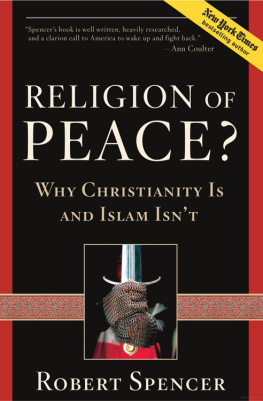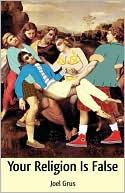
Alternative Sociologies of Religion
Alternative Sociologies of Religion
Through Non-Western Eyes
James V. Spickard

NEW YORK UNIVERSITY PRESS
New York
NEW YORK UNIVERSITY PRESS
New York
www.nyupress.org
2017 by New York University
All rights reserved
References to Internet websites (URLs) were accurate at the time of writing.
Neither the author nor New York University Press is responsible for URLs that may have expired or changed since the manuscript was prepared.
Library of Congress Cataloging-in-Publication Data
Names: Spickard, James V., author.
Title: Alternative sociologies of religion : through non-Western eyes / James V. Spickard.
Description: New York : New York University Press, [2016] | Includes bibliographical references and index.
Identifiers: LCCN 2016041814| ISBN 9781479826636 (cl : alk. paper) | ISBN 9781479866311 (pb : alk. paper)
Subjects: LCSH: Religion and sociology. | Religions.
Classification: LCC BL60 .S6625 2016 | DDC 306.6dc23
LC record available at https://lccn.loc.gov/2016041814
New York University Press books are printed on acid-free paper, and their binding materials are chosen for strength and durability. We strive to use environmentally responsible suppliers and materials to the greatest extent possible in publishing our books.
Manufactured in the United States of America
10 9 8 7 6 5 4 3 2 1
Also available as an ebook
In memory of
Mary Alice Adkins Spickard (19201981)
Donald Elliot Spickard (19202003)
We should not be ashamed to acknowledge the truth from whatever source it comes to us, even if it is brought to us by former generations and foreign peoples.
Yaqub ibn Ishaq al-Kindi (ca. 801866; translated by Richard Walzer, Greek into Arabic)
Contents
This book has been incubating for a long time. I owe thanks to a special set of colleagues and friends, who have encouraged my work through thick and thin. I especially wish to thank Meredith McGuire, Mary Jo Neitz, Roberto Blancarte, Ole Riis, the late Ivan Varga, the late Otto Maduro, Peter Beyer, Afe Adogame, Adam Possamai, and my brother Paul Spickard. My many long conversations with them helped me work out my ideas. Paul Spickard, Titus Hjelm, Tekle Woldemikael, and Blaine Pope also read parts of the manuscript and gave me helpful ideas. Mia Lvheim, Vanja Mosbach, and Jrgen Staarup made insightful remarks on a presentation that helped me reshape the final chapters. Margit Warburg sponsored an event where I could present some of these ideas, as did Lene Khle. Farid Alatas encouraged me at two key points. William Swatos encouraged me at two others. Other colleagues too numerous to name asked questions at conferences, joined conversations in the halls, and otherwise inspired me. I thank them all. I appreciate how they have stimulated and strengthened my thinking.
I owe special thanks to the University of Redlands for the 20142015 sabbatical during which I finished the manuscript and for supporting my presentations of these ideas at many conferences. I particularly want to thank former Vice Presidents for Academic Affairs Phil Glotzbach and Nancy Carrick for allowing me to structure my job so that I have more time for scholarship than is typical at our teaching-heavy university. The staff of Redlands Armacost Library provided me with several crucial resources. The Society for the Scientific Study of Religion gave me a couple of small grants that helped fund my interviews with religious social activists. The Redlands Faculty Review Committee also funded research that has found its way into this book. I wish to thank the members of the Los Angeles Catholic Worker for their hospitality during the years that I visited them. That experience helped to shape my argument in Chapter Eight, and also my life.
Many thanks to Jennifer Hammer and the staff at NYU Press for helping make this book a reality. I also owe thanks to various journal and book editors for seeing value in the dozen or so articles that I have published on this topic. I thank their publishers for permitting me to use passages from these works for which I no longer own the copyright, though none of that material appears here without major reshaping. I have listed these at the end of the book.
Typographic Note
Where possible, I have used diacritical marks in the display of Chinese, Arabic, and Navajo words. I speak none of these languages, so I have relied on the best authorities I can find. I distinguish between two types of quote marks. Double quotes indicate that I am quoting someone directly. Single quotes are shudder-quotes; they indicate a term from which it is helpful to maintain a bit of intellectual distance.
alternative Sociologies of Religion
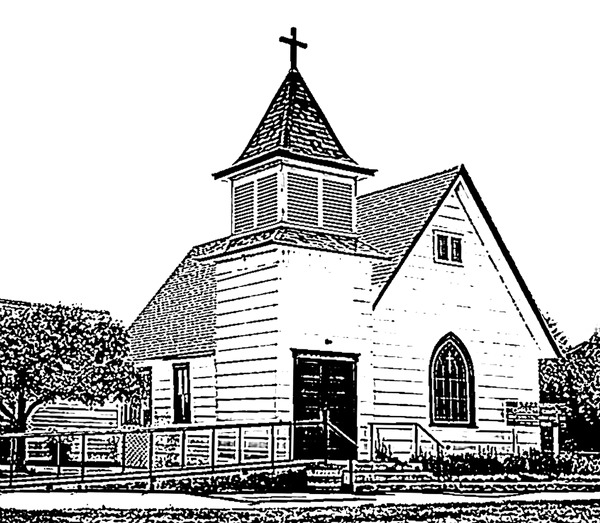
Community Church. Photograph by Steven Pavlov, 2009 (Creative Commons BY-SA 3.0).
A Sociologist Thinks about Religion
I was not raised to be religious. Though some of my childhood playmates came from families that believed in God, prayed before meals, and went to church on Sunday, I did not. At least not most of the time. Every so often, my grandmother would go on the warpath about how I was being raised heathen, and my parents would send me down the street to the local Episcopal parish. Though young, I knew that they did this to keep her off their backs. At this time, they had no sense of religious duty.
My father sometimes went with me. He once told me how he, as a child in similar circumstances, had imagined a banner proclaiming Allah is the All-God descending over the altar of his own grandparents Methodist church. My memory is now vague, but I think he was trying to help.
Like most churches in that era, mine recognized childrens limited attention spans, so my age-mates and I trooped off to Sunday School classes, where we learned what we were supposed to believe to be good Christians. These were Episcopalians, so we did not get lakes of fire to burn the wicked or a glorious Rapture to transport the saved. We mostly got Bible stories. But I still got into trouble by asking who Cain married, whether the Hebrews were right to slaughter the Canaanites, why the Kingdom of God did not arrive as soon as Jesus had said it would, and why a good God would allow six million Jews to be murdered in the war. As my mother put it, I was a bit of a pill.
In my childs view, religion was something that happened in churches, mosques, or synagogues, that involved believing improbable things about unseen beings, and that was set about by shoulds or rules. I was not alone. This image has a long pedigree in Euro-American culture, and I now know that it does considerable disservice both to religion and to religious people. Whatever I may have thought as a child, I now see that religion is more than just a set of beliefs and rules, plus an organization that encourages people to believe and obey them. To use the Latin, religion is more than ecclesia, doctrina, and moralis. Among other things, it involves community, ritual, a sense of the sacred, the cultivation of hope in the midst of despair, and a host of other matters. In many cases, it concerns ones attitude toward life as much as it does any particular set of supernatural and moral views.
Next page

